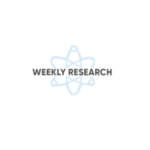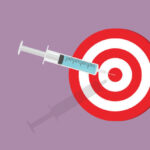Remote patient monitoring (RPM) workflows enable healthcare teams to provide continuous, data-driven patient care outside traditional clinical settings. This article will provide a comprehensive overview of how RPM workflows function, from identifying suitable patient populations to implementing devices, collecting and analyzing health data, coordinating care, and properly billing services. By understanding the key components and benefits of RPM workflows, healthcare providers can effectively leverage this technology to enhance patient monitoring, improve outcomes, increase efficiency, and create new revenue streams.
Specific remote patient monitoring (RPM) workflows for healthcare teams involve:
- Establishing a patient base
- Training staff
- Supplying remote patient monitoring devices
- Setting up devices
- Onboarding patients
- Collecting, transmitting, analyzing, and managing patient health data
- Billing
Once the RPM workflows are set up, providers can generate reports on patient health status and provide updates to other healthcare professionals involved in the patient’s care. This article explains how RPM workflows typically work and the 11 ways RPM enhances workflows for healthcare teams.
Remote Patient Monitoring Workflows for Medical Teams
Establishing a patient base for remote patient monitoring (RPM) involves several key steps. By following the steps outlined, healthcare providers can establish a patient base for RPM and provide high-quality, patient-centered care to their patients. First, healthcare organizations must determine which patient populations benefit most from RPM. This may include patients with chronic care conditions, or even those with complex conditions like atrial fibrillation, and those who live in rural or underserved areas.
Second, a marketing strategy is needed to reach potential patients and healthcare providers. This may include advertising, direct mail campaigns, and outreach to local healthcare organizations. Finally, once an RPM platform that meets the needs of the patient base and healthcare providers is chosen, providers will need training on using the RPM platform and integrating RPM into their workflow.
Data Transmission & Data Collection Workflows
Patients use FDA-cleared remote monitoring devices, such as wearables or home-based medical equipment, to collect health data such as blood pressure, heart rate, blood glucose levels, oxygen saturation, etc. The data is automatically transmitted to a secure server through Bluetooth or cellular connectivity.
Once the data is collected, it is transmitted to healthcare providers, who can access it in real-time through a secure portal. This allows healthcare professionals to continuously monitor patients’ conditions and receive alerts if values fall outside normal ranges.
Data Analysis, Intervention, and Follow-up
The healthcare provider analyzes the patient’s health data to identify trends and make informed decisions about treatment plans. They can also use predictive analytics to anticipate and prevent potential health issues.
If necessary, the healthcare provider can intervene and provide appropriate care, such as adjusting medication dosages or providing patient education. They can also schedule follow-up appointments to monitor the patient’s progress and adjust treatment plans accordingly.
Workflows require detailed reporting and documentation. Healthcare providers must document all interactions with the patient in their electronic health record (EHR) system.
Remote Patient Monitoring Workflows for Billing
Billing for remote patient monitoring services can be complex and may vary by the type of service provided and the specific requirements of the healthcare provider. It’s important to note that RPM billing is subject to regulations and guidelines from government agencies, such as Medicare and Medicaid. Furthermore, regulations may differ by state, depending on the location and type of healthcare provider.
Healthcare providers should also ensure proper remote patient monitoring workflows are in place, including documentation and coding practices, to ensure accurate billing for remote patient monitoring services. Overall, RPM can help medical teams enhance their billing practices by improving patient engagement, patient monitoring, resource allocation, and revenue opportunities.
11 Ways Remote Patient Monitoring Enhances Workflows for Healthcare Teams
Remote patient monitoring studies are being conducted on remote patient monitoring workflows. A recent study identified three critical factors for adopting and scaling remote health tools like remote patient monitoring. These include conducting research before planning, designing, and developing RPM interventions, targeting a combination of local diseases to reach and provide accessibility to the general public, and utilizing a patient-centric design to facilitate automatic integration into traditional clinical workflow.
Robust remote patient monitoring (RPM) workflows create efficiency for medical teams in the following 11 ways.
1) Streamlined Communication
RPM allows medical teams to monitor patient health data remotely and receive alerts for potential health issues. This helps reduce communication gaps and streamline communication between medical professionals and patients.
2) Early Detection
By tracking patient data regularly, RPM systems can alert medical teams about changes in patient health conditions. This enables medical professionals to take necessary action to prevent a health crisis before it becomes severe, leading to better patient outcomes and reduced hospitalization.
3) Supporting Preventive Care
RPM workflows help detect potential health issues early, enabling healthcare providers to take necessary action before a condition worsens. This can reduce the need for hospitalization and emergency department visits, leading to lower healthcare costs and better patient outcomes.
4) Reduced Need for in-person Visits
Setting up robust remote patient monitoring workflows can reduce in-person visits, particularly for chronic conditions requiring ongoing monitoring. This can reduce the workload on medical teams, allowing them to focus on patients who need immediate attention.
5) Improved Patient Engagement
RPM can improve patient engagement, as patients are more likely to comply with their care plans when they feel connected and supported. This can lead to better health outcomes and reduced healthcare costs.
6) Increased Efficiency
By reducing the need for in-person visits and streamlining communication, RPM can increase the efficiency of medical workflows. This allows medical teams to provide better care to more patients in less time, leading to better outcomes for both patients and medical professionals.
7) Reduced Documentation Time
With RPM, nurses and medical teams can remotely monitor patient data and receive alerts when a patient’s condition changes. This means they spend less time documenting vital signs manually and more time analyzing data, making it easier to identify trends and make informed decisions.
8) Improved Care Coordination
RPM allows nurses and medical teams to collaborate with other medical professionals remotely and share patient data in real-time, making coordinating care across multiple providers easier.
9) More Frequent Patient Monitoring
With quality remote patient monitoring workflows, medical teams can monitor patients more frequently and in real-time, allowing them to identify and address issues before they escalate. This can improve patient outcomes and reduce the need for hospitalization.
10) Enhanced Patient/Clinician Engagement
Remote patient monitoring can help qualified medical health professionals engage with patients more effectively by providing real-time feedback and alerts. This can improve patient compliance with care plans and improve health outcomes.
11) Increased Revenue Opportunities
Offering RPM services allows medical teams to generate additional revenue streams. Depending on the specific billing model, medical teams may bill for each RPM service provided or bundle services over a particular period. As a result, RPM can provide a steady stream of income to help healthcare organizations maintain financial stability over the long term.
Remote Patient Monitoring Workflow: Key Points
Overall, remote patient monitoring workflows can help medical teams improve efficiency, enhance care coordination, support preventive care, promote patient engagement, and facilitate remote care, making it an essential tool for healthcare providers. By following the above steps to establish an RPM program, healthcare providers can establish a patient base for RPM and provide high-quality, patient-centered care.
Introduce your healthcare partners to a better remote patient monitoring experience. With our free demo, you can see the difference Tenovi solutions can make.






